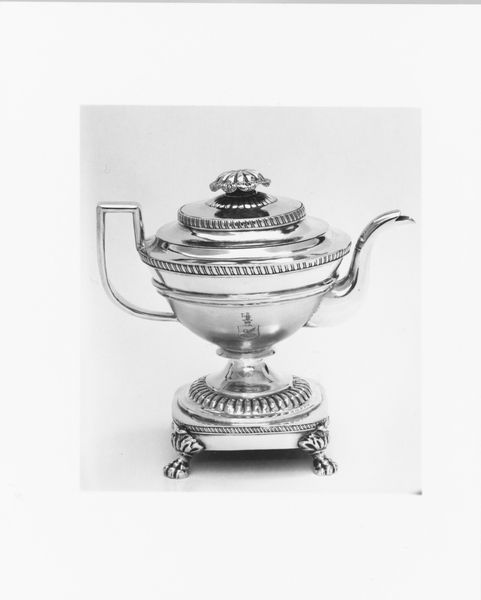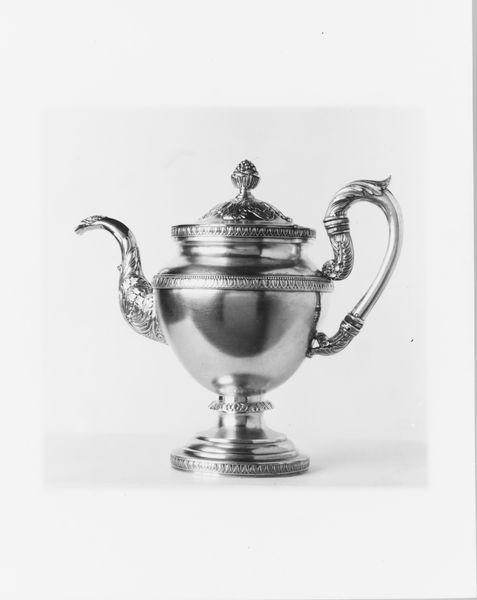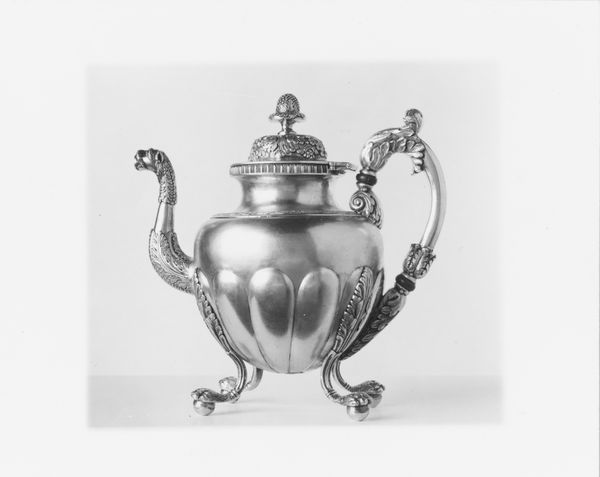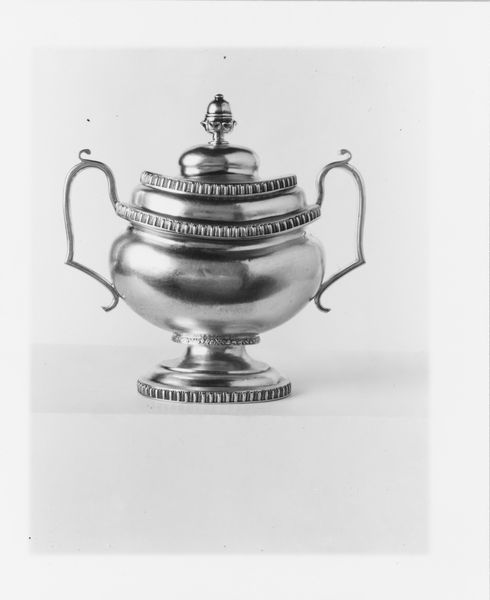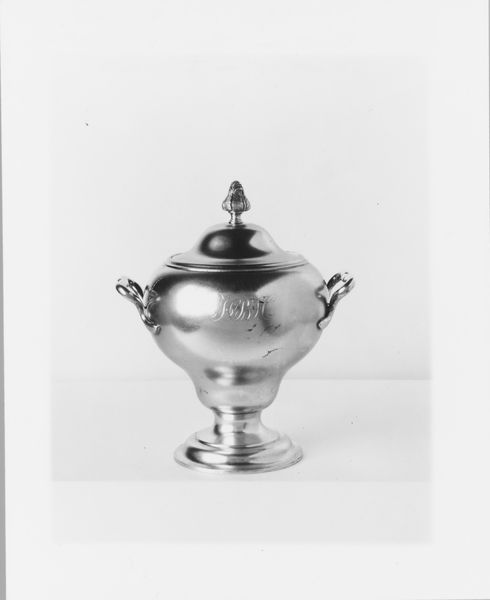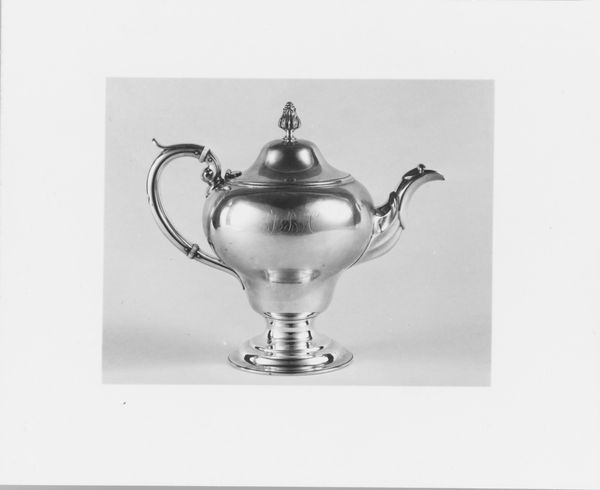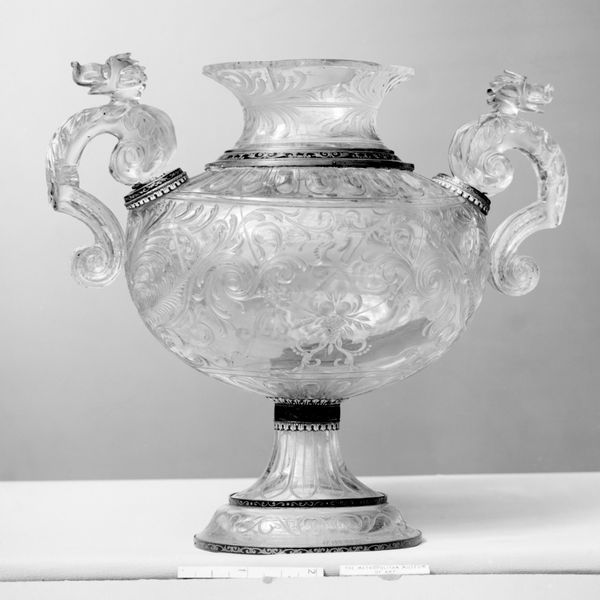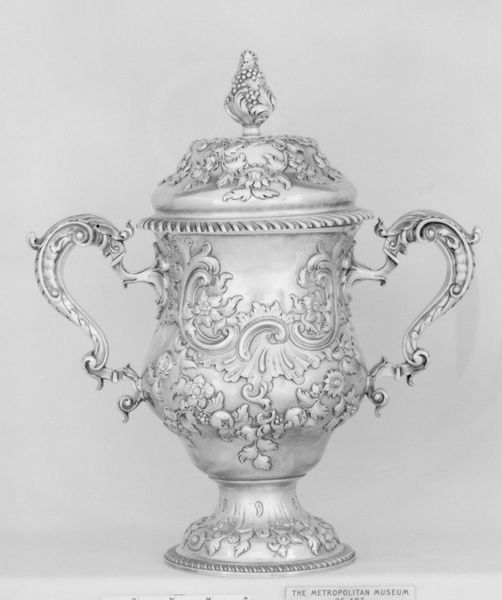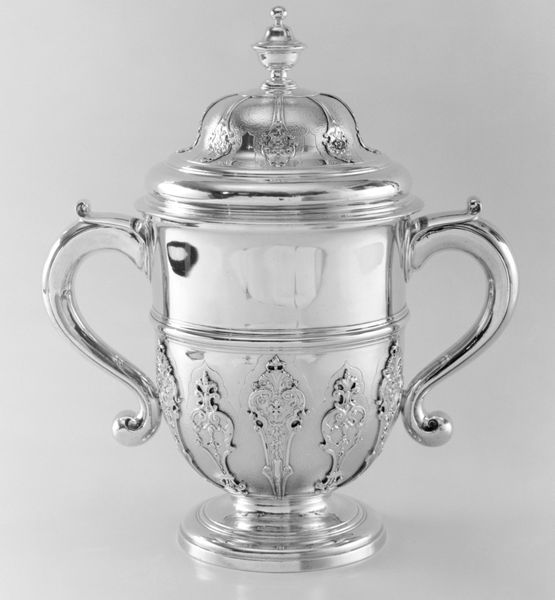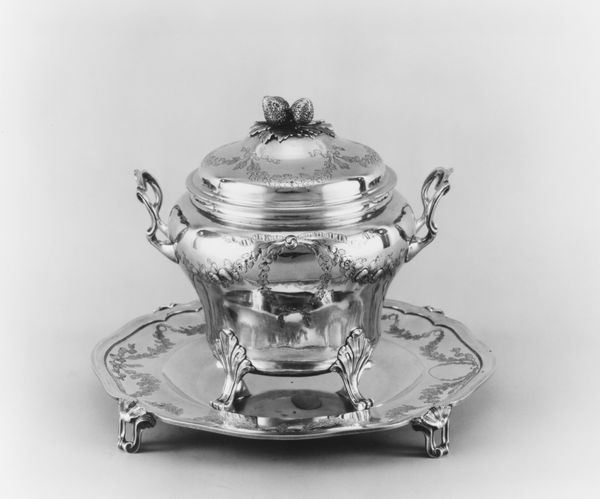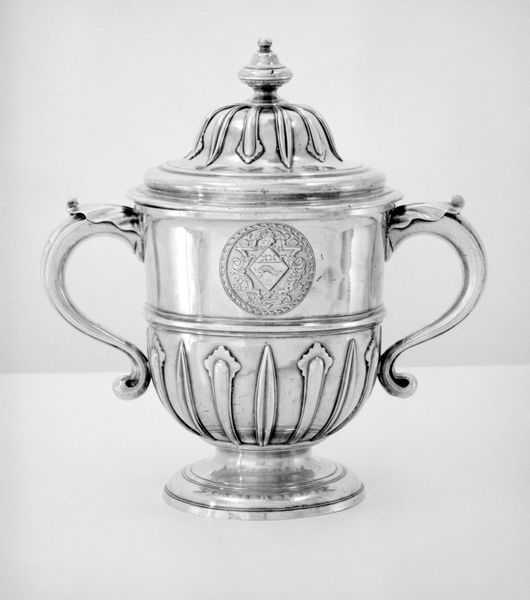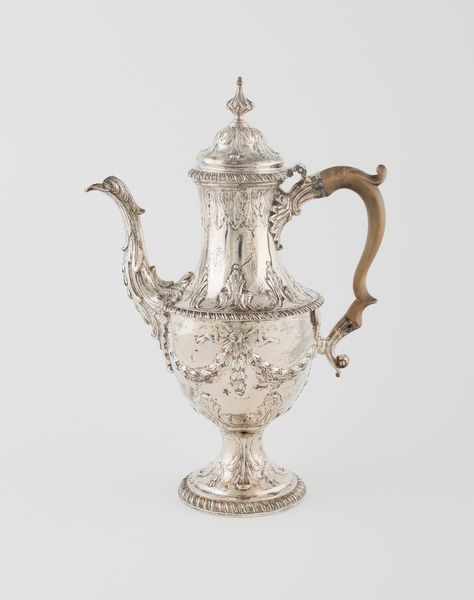
silver, metal, sculpture
#
neoclacissism
#
silver
#
metal
#
black and white theme
#
framed image
#
sculpture
#
black and white
#
united-states
#
decorative-art
Dimensions: Overall: 10 1/4 x 7 7/8 x 5 1/2 in. (26 x 20 x 14 cm); 28 oz. 11 dwt. (887.5 g) Body: H. 8 1/2 in. (21.6 cm); 24 oz. 13 dwt. (766.8 g) Cover: 2 1/2 x 3 7/8 in. (6.4 x 9.8 cm); 3 oz. 18 dwt. (120.7 g)
Copyright: Public Domain
Curator: What a find. Today, we're looking at a silver Sugar Bowl crafted between 1835 and 1845. The artists behind this striking piece are Robert and William Wilson. Editor: My first thought? Drama. It feels like a movie prop from a historical epic, all gleaming silver and elaborate detail. It makes me think of royal intrigue and whispered secrets over tea. Curator: That drama comes through its Neoclassical style. Notice how the artists utilized imagery associated with abundance and prosperity – it suggests a desire to visually elevate everyday objects to a higher status. There's even a pastoral figure gracing the lid. Editor: Yes, that shepherd atop the lid gives a rustic touch. It almost clashes with the bowl's fancy, detailed artwork, but there's beauty to that juxtaposition. Also, it is incredible to think this object that would normally sit inside the home could still make you want to be outdoors. Curator: I find that contrast fascinating too, but it could simply denote aspirations to classical agrarian ideals. The decoration and subject could indicate that whoever was going to utilize the bowl yearned for something different in their everyday life. Sugar was itself, of course, an ingredient associated with trade, but that very real history feels invisible, overwhelmed with fanciful decoration. Editor: True. Sugar might represent work, and perhaps that’s why someone felt the need to make something related to it beautiful and precious? Or to cloak themselves in perceived prestige. I can definitely picture the owners wanting to appear aristocratic. The decoration is also slightly overwrought: I almost feel the weight of all that ornate metalwork. Curator: The weight feels appropriate, especially when you consider what sugar symbolized during that time: economic power and unfortunately the painful exploitation from the labor that procured this object. This object is a beautiful reminder of complex historical layers and economic disparity. Editor: Absolutely, you’ve made me see it in an entirely different light. Now I perceive it as carrying centuries of stories and quiet social critique. Curator: It’s a compelling testament to how a simple form can carry so much meaning, isn't it?
Comments
No comments
Be the first to comment and join the conversation on the ultimate creative platform.
